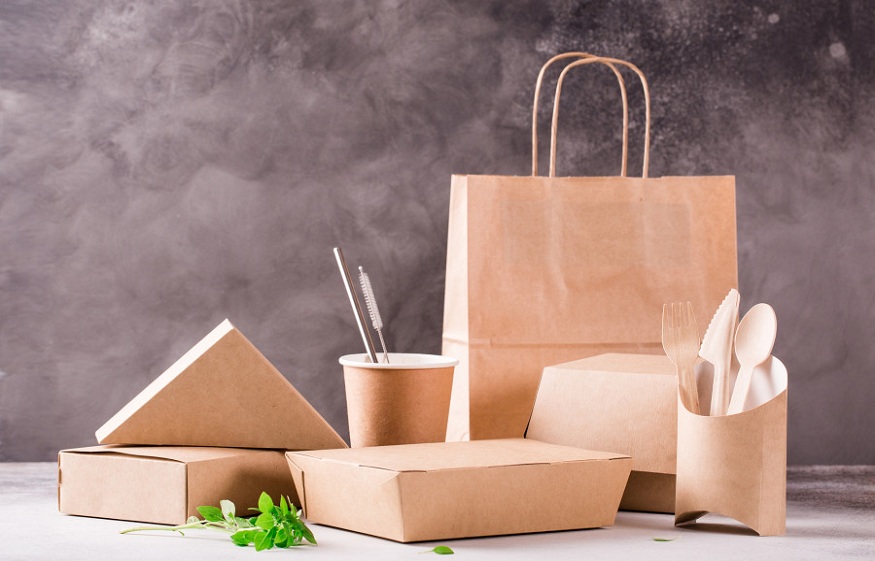543 Views
Flexible packaging is becoming more popular as a means for food businesses to stand out. Packaging designs that are flexible include stand-up pouch bags, which are comprised of many layers of plastic and are used to prevent food spoilage. Here are some of the strong arguments in favor of flexible packaging that many firms should consider. This will definitely help people to understand the importance of flexible food packaging boxes.
- Flexible packaging has several benefits, one of which is that it is good for the environment. Innovations like these make the journey much easier as the globe evolves slowly but progressively in the direction of a more responsible course. Flexible packaging may be produced without using a lot of natural resources. The amount of trash produced and energy used in the creation of these films is much less when compared to rigid containers and/or glass. Additionally, it delivers packages with less greenhouse gas emissions than conventional packing. Additionally, this helps companies fulfil their commitments to run environmentally responsible operations.
- Industries are aware that customer satisfaction is the secret to quick company success. A happy customer guarantees a profit. Today’s consumers want a variety of features from every product, and flexible packaging gives them all of that and more. Flexible packaging often has spouts, zip locks, and resealable closures. The user’s comfort and convenience are considerably increased by these seemingly insignificant features. Flexible packaging enhances the entire shopping experience in addition to simplifying storage.
- When you hear the phrase packaging, you often think of plastic; when you think of plastic, you think of how difficult it is to recycle and how much harm it can bring to the environment. The reverse is true with flexible packaging. It is really simple to recycle and contributes to keeping discarded pouches or bags out of landfills. Because of zipper and seal top closures, films and items made of flexible packaging material are frequently intended for reuse. In this manner, consumers can continue to use them for many purposes before discarding them.
- Flexible packaging is perfect for individualized solutions due to the materials’ pliable and soft character. Any shape, size, or visual display that is required may be created with the material. Flexible packaging will provide you with a competitive advantage because of its capacity to produce distinctive designs. The three most popular types of materials for the customizable film are chloride, polyolefin, and polyethene. The box may either stand up or lay down since these materials are so flexible. Since flexible marketing gives graphic designers greater creative freedom than other types of materials, it empowers them. In essence, it gives the designer free rein to display art anywhere they want on the box. Keep in mind that recognizable and beautiful packaging is essential for brand visibility.
- Another key component that buyers are likely to value is variety. The product’s appeal is dependent on its appearance and feeling in addition to its quality and lifespan. Most consumers who have the means to do so favor the products that look better. Flexible packaging, as opposed to traditional packaging, enables stunning designs, whether it’s a straightforward shopping bag or a chic container lid. Additionally, it enables companies to investigate and test various packaging strategies, giving their goods a competitive edge. If your product is packaged attractively, it will likely be removed from the shelves sooner rather than later.
- No of its size or shape, flexible packaging typically weighs less than traditional packaging. Its small weight offers a plethora of other benefits. The first benefit is their ease of transportation. If stored properly, light things are also less likely to sustain harm while being transported. Flexible packaging is lightweight, allowing companies to move more while yet making more money. As they can carry more with less effort, it also enhances the customer experience.
- Since flexible packaging requires fewer materials than more traditional packaging, it is less expensive to produce. The company will save money even if the manufacturer has to make multilayer films in order to construct more secure barriers. The package becomes more secure and difficult to tamper with since there are more film layers, which helps lower tampering losses. Additionally, the durable, long-lasting film prevents packaging from ripping at the retail location and throughout the supply chain. Flexible packaging also saves money since it can result in higher product-to-package ratios, which lower production costs.
- The best feature of most flexible packaging materials is that they aid in retaining a product’s original flavors and aromas while also extending its shelf life. How? These wrappings or films provide a strong barrier defense. Sometimes a small additional coating of protection is added to them. This barrier safeguards the products’ freshness unlike any other by being resistant to moisture, vapors, dust, and UV radiation, allowing customers to enjoy them to the fullest.
- Flexible packaging is any container made of materials that may bend when filled or closed. It is simple to shape into a variety of shapes and sizes. Due to the usage of adaptable film materials like chloride, polyolefin, and polyethene that bend easily, flexible packaging is a customized choice. Additionally, companies may use unique packaging for their goods to make them seem more alluring. One of the best customization benefits is the option to print logos and colors in high quality. Adding relevant, understandable visuals and content to the packaging helps to increase brand recognition.
- Despite the many benefits it provides, flexible PET packagingis a less expensive option than traditional packaging since it requires fewer resources to produce. The films and containers fully tamper- and tear-proof the items to be protected since they are made of several layers that are blended together, reducing wear and tear costs. Since flexible packaging enables a higher product-to-package ratio and lowers production costs, it is even more economical. Flexible packaging materials also guarantee decreased shipping costs due to their modest weight.
In the above article, we have discussed a number of benefits of flexible laminated packaging. One can understand from our discussion that they are of great use in today’s world




